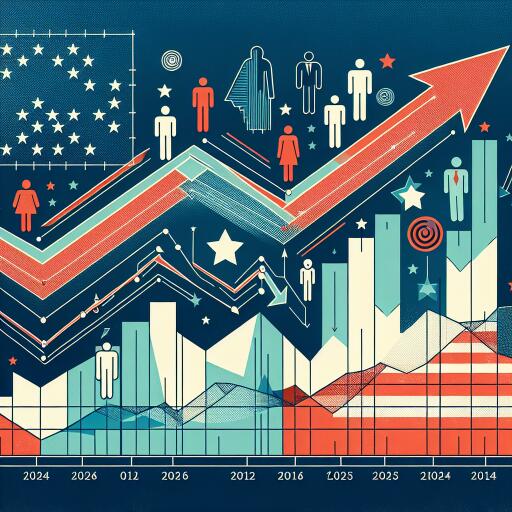Understanding the Impact of U.S. Presidential Policies on Unemployment Rates
The economic legacy of a U.S. president is often measured by various key indicators, with the unemployment rate being one of the most significant. The unemployment rate—the percentage of the labor force that is jobless and actively seeking employment—is a critical gauge of economic health. Throughout history, policies implemented by U.S. presidents have influenced the state of unemployment, reflecting the effectiveness of their economic strategies.
Presidential Performance: Unemployment Rates Overview
Examining the tenure of U.S. presidents from Truman to the present day reveals a dynamic landscape of unemployment rates. Historically, President Lyndon B. Johnson enjoyed the lowest average unemployment rate at 4.18%, showcasing a period of economic prosperity. On the other side of the spectrum, President Gerald Ford faced the highest rate at 7.76%, with President Ronald Reagan closely following at 7.51%.
It’s crucial to note that unemployment rates are lagging economic indicators. They reflect the economy’s performance rather than predict future conditions. During economic downturns, unemployment rises as jobs become scarce, but it generally recedes during periods of growth and expansion.
The Federal Reserve’s Role and Economic Events
The Federal Reserve, the central banking system of the U.S., plays a pivotal role in shaping monetary policy with the aim of achieving maximum employment and stable prices. Through its policies, the Fed influences economic conditions, impacting employment rates. Moreover, global events, recessions, and technological advancements also leave their mark on unemployment rates.
As of President Joe Biden’s term, the average unemployment rate stands at an impressive 4.11%, though these numbers are subject to change until his presidency concludes. Remarkably, unemployment reached its lowest point in 54 years in 2023, demonstrating the labor market’s resilience and strength.
Types of Unemployment and Government Intervention
Unemployment is categorized mainly into structural and cyclical types. Cyclical unemployment fluctuates with the economy’s natural cycle, usually declining as the economy strengthens. Structural unemployment, however, is more stubborn, rooted in fundamental shifts in the economy that displace workers.
Government policies play a pivotal role in managing unemployment, with measures ranging from fiscal stimuli to monetary interventions designed to spur growth and reduce joblessness. Training programs and incentives for businesses to hire and train employees are examples of efforts to tackle both cyclical and structural unemployment.
Economic Implications of Unemployment
Unemployment transcends individual hardship, affecting economic growth, consumer spending, and overall economic health. High unemployment reduces purchasing power, slowing down the economy further and potentially triggering a cycle of increased unemployment and reduced spending. The relationship between unemployment and inflation, articulated by the Phillips Curve, indicates an inverse correlation with significant implications for economic policy.
Presidential Impact on Unemployment
The responsibility of a president in shaping the labor market is undeniable, though not absolute. Economic conditions, both inherited and unexpected, influence unemployment rates. Yet, the strategic decisions made by an administration can critically affect the nation’s employment landscape.
Whether through fiscal policies, social programs, or responses to economic crises, U.S. presidents have played key roles in navigating the complexities of the labor market. From Truman’s post-WWII adjustments to Biden’s response to the COVID-19 pandemic, each administration has faced unique challenges in striving for economic stability and growth.
In conclusion, the unemployment rate serves as a mirror reflecting the outcomes of presidential policies on the labor market. While external factors and unforeseen events can sway the unemployment rate, the strategic economic decisions of a president and their administration remain influential in shaping America’s employment narrative.
